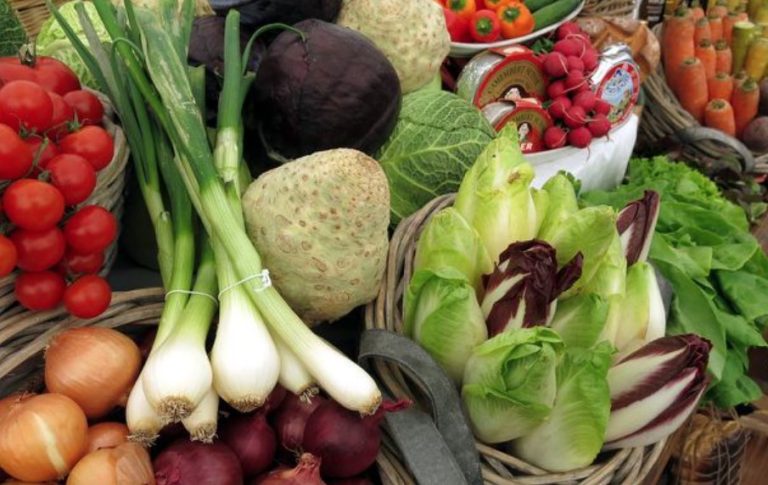If you answer the question of what you eat roughly with “everything”, then you probably eat according to the mixed diet principle. We will explain to you exactly what a mixed diet means and how you can make this type of diet more sustainable.
There are many different types of diets. If you only consume plant-based foods, you are eating vegan. If you also eat eggs and dairy products, it is a vegetarian diet. Mixed diets also include meat and fish in the diet.
For environmental and animal protection, a vegan or at least vegetarian diet is particularly recommended. If you pay attention to a few points, you can at least make the mixed diet more sustainable. This article gives you specific tips on how to do this.
What does mixed food mean?

According to the Spectrum Nutrition Lexicon, mixed diet refers to “diets made up of plant and animal foods”. If you also pay attention to a good ratio of fats, proteins and carbohydrates, you are talking about a balanced mixed diet.
A pizza with salami, for example, would be mixed food thanks to grain, meat, cheese and tomato sauce, but not particularly balanced.
The 10 recommendations of the DGE
The German Society for Nutrition (DGE) recommends ten rules for a wholesome diet as part of a mixed diet. Some of these also have a direct impact on the sustainability of your diet.
It is particularly important that you make your diet varied and plant-based. That means: more plant-based than animal-based foods and as many different ones as possible. As a guideline, the DGE recommends at least 400 grams of vegetables and 250 grams of fruit per day for adults. With the plant-based diet, you also eat more environmentally friendly. According to the Bavarian State Ministry of Food, Agriculture and Forestry, a plant-based mixed diet reduces greenhouse gas emissions by 15 percent compared to a meat-based one and saves land and water.
You can eat fish once or twice a week, but adults should limit themselves to 300 to 600 grams of meat and sausages per week. By consuming smaller amounts of meat and fish, you should be able to afford organic and more species-appropriate animal husbandry at the same time.
When preparing food, you can make sure that you only cook it for as long and as hot as it is really necessary. On the one hand, this means that more nutrients are retained, and on the other hand, you can easily save energy.
This is how sustainable mixed food works
The DGE also gives direct advice on sustainable nutrition. You can combine these with mixed foods.
The central aspect is the already mentioned plant-based diet.
It is also important that you buy ecologically and fairly produced food.
Whenever possible, you can also shop regionally.
It is best to only buy foods that are in season. Then you are more likely to find an offer from your region.
In addition to the diet itself, you can make your mixed diet sustainable by handling food consciously. For example, try to throw away as little as possible to avoid food waste:
When shopping, make sure you only buy as much as you can safely eat.
If an expiration date has passed, check food for its appearance, smell and taste. Most of the time, the food is still edible without any problems even after it has expired.
Buy unpackaged products whenever possible. You can find fruit and vegetables at a weekly market – but often also in supermarkets and always in organic markets – to buy loose. You can simply pack it in old paper or cloth bags you brought with you. Maybe you would like to pay a visit to a packaging-free shop? There you will find a lot of different things, such as pasta or muesli, to fill in containers you brought with you.
If possible, avoid ready meals and frozen foods or at least reduce your consumption. It is almost always heavily processed food that is provided with preservatives, colorings or other additives. And by the way, you save money if you cook yourself and plant-based.
Try new things

Even if you eat a mixed diet every day, it can be a valuable experience to try a different diet from time to time. A particularly popular example of this is the “Veganuary“. You eat vegan for a month. By name, most people try it in January, but there’s nothing wrong with going vegan in April – or any other time.
In the Veganuary or just like that you can test vegan meat alternatives and alternatives to dairy products as part of the mixed diet. For example, there are various vegan cheeses or plant milk as a milk substitute.
For maximum regionality, you can also grow your own fruit and vegetables. A garden is the best option for this, but even with a balcony, you can take care of a lot of things. For example, you can plant tomatoes on the balcony, and even potatoes on the balcony are an option.

